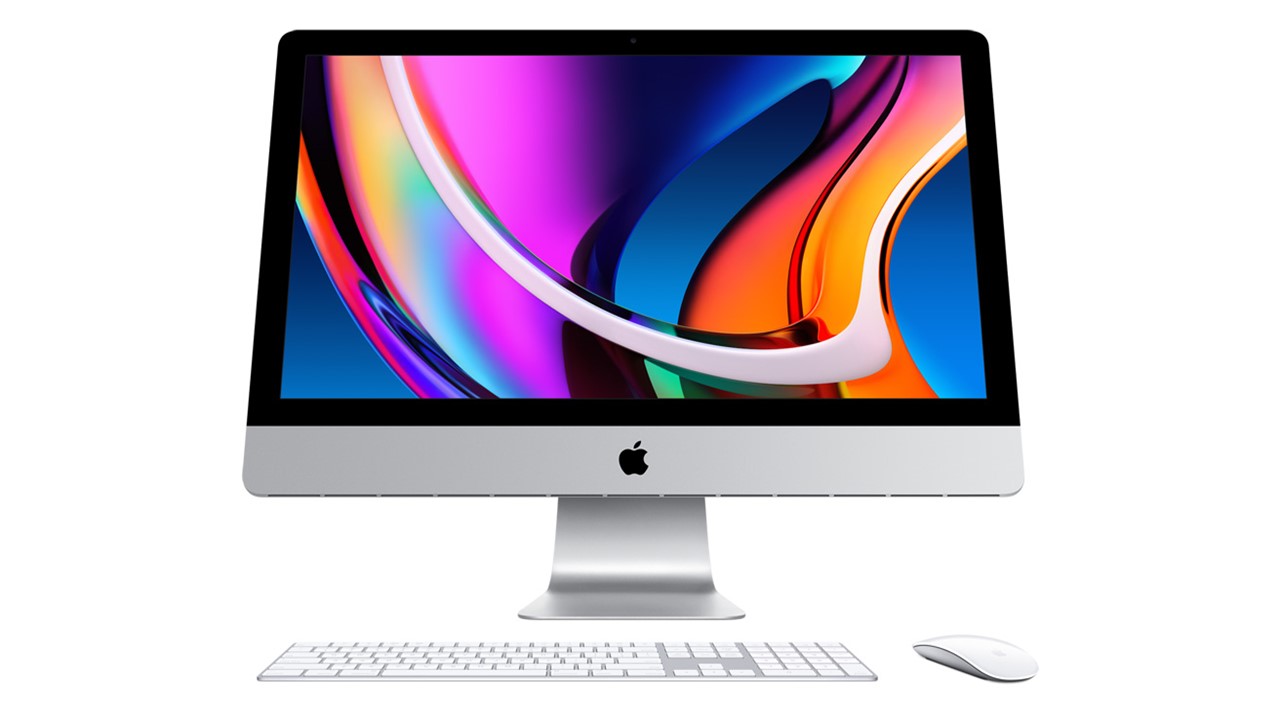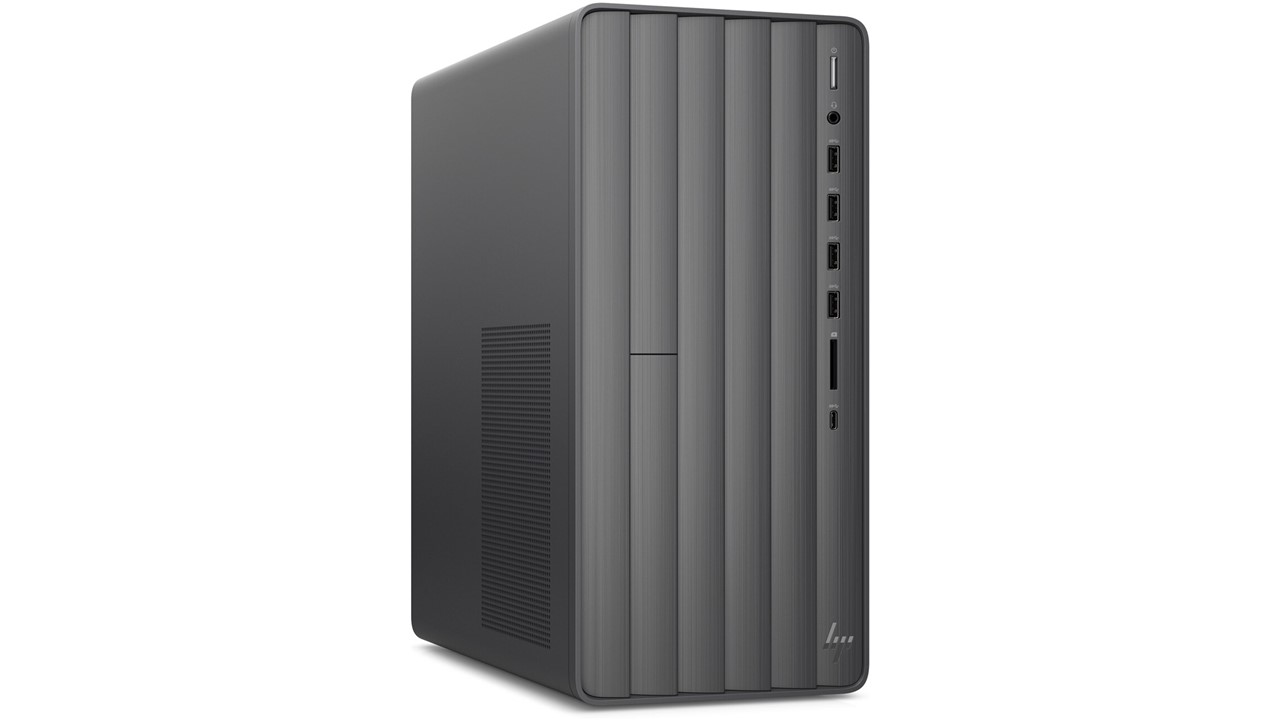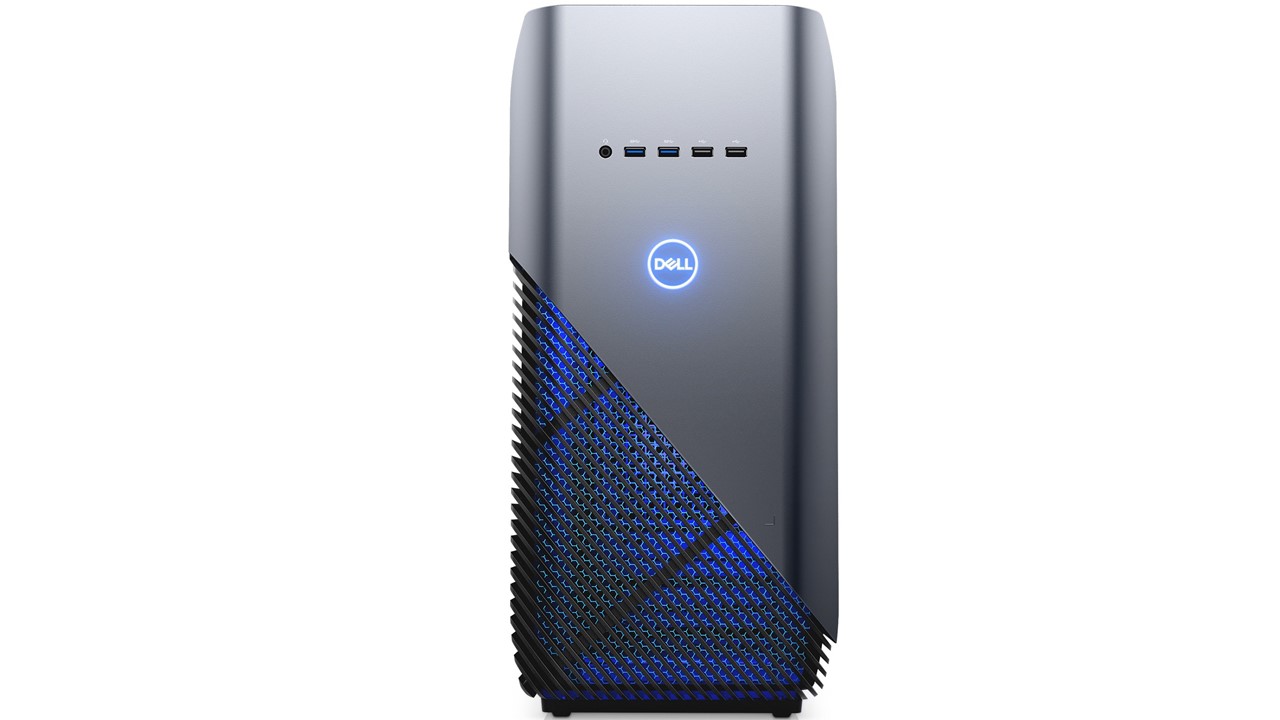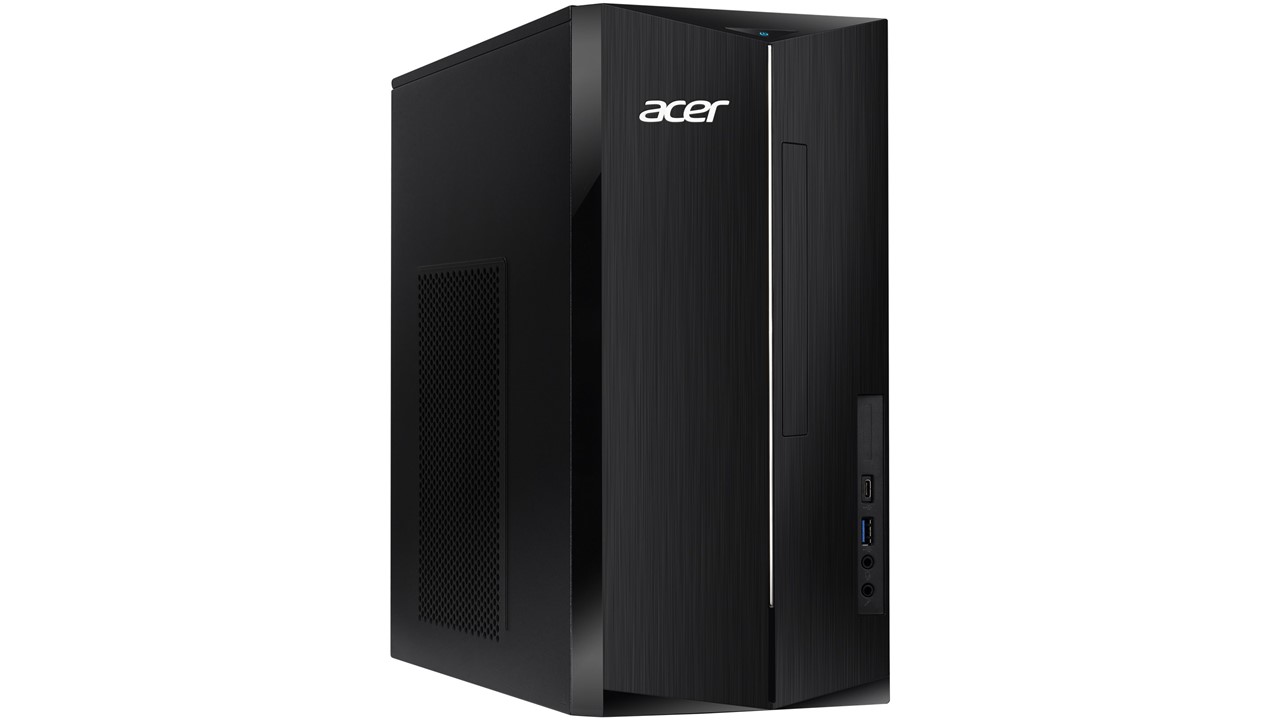This post is to help those who are thinking of buying a desktop for music editing, with our primary focus on the best desktops for FL Studio. Not only music, even video editors would find it useful, but only for audio editing purposes.
TOP PICKS:
In This Article
Minimum and Recommended System Requirements for FL Studio
Those who are just learning audio editing or have smaller, simpler audios to work with on FL Studio, can opt for an Intel i5 processor, at least 8 GB of RAM, 256 GB of storage, and integrated graphics.
These are the absolute minimum set of specs that we would suggest, since going lower than this on a new desktop won’t be worth it.
Although, it is often seen that these become insufficient when handling large tracks with lots of effects, and so those with heavier needs would have to choose a CPU with at least an Intel i7 processor, 16 GB RAM, 512 GB SSD or more storage, and a decent Nvidia GPU.
Minimum system requirements: Intel Core i5 │ 8 GB RAM │ 256 GB SSD │ Integrated Intel or Radeon graphics (based on the processor brand).
Recommended system requirements: Intel Core i7 or better alternative │ 16 GB or more RAM │ 512 GB or more storage (SSD preferred) │ NVIDIA GeForce GTX 1050Ti or better GPU.
5 Best Desktops for FL Studio:
1. Dell XPS 8390 – Best Overall

Bottom Line: The XPS 8930 is the best on this list, both in terms of performance and the value it offers when its price is considered. It has the good processing power and ample memory to run FL Studio and even has a dedicated GPU that you may use.
Key Features:
- Processor: Intel Core i7-9700
- Graphics: GTX 1050 Ti
- OS: Windows 10 Home
- RAM: 16 GB
- Storage: 1 TB Hard drive + 256 GB SSD
Pros
- Good performance
- Good connectivity features
- Can be used for both audio and video editing
Cons
- Hyper-threading is not supported by the processor
- Entry-level models do not have an SSD
- Cannot be Overclocked
The first device we present to you is the Dell XPS 8390 that is a well-priced, power-packed device.
At the lower side of the black chassis, you find the XPS logo, while the Dell branding is placed in the middle.
It may not have the “special” looks to stand out of the crowd, but in terms of performance, it surely does.
The processor present in it is a 9th generation Intel Core i7, which is an 8 core CPU, optimized to perform at 4.7 GHz max speed.
This is surely something that one would benefit from when using FL Studio, or other audio-related software for that matter.
There is also a GTX 1050 Ti video card to perform some video editing tasks as well.
The 16 GB of RAM would not need an upgrade any soon, and you can work in your house or your studio comfortably.
The list doesn’t end here, and there is both a hard drive and an SSD to store large files.
Along with this is a good array of ports for attaching cables to connect other devices that are relevant for an audio editor, and so you can expect a very smooth experience.
2. Apple iMac 27 Inch – Runner Up

Bottom Line: The Apple iMac with its swift performance and optimization can be a very useful device, even if you want to try high-end editing on FL Studio. Things like Thunderbolt ports and a 5K display can offer a much better experience when editing as well.
Key Features:
- Processor: Intel Core i5
- Graphics: AMD Radeon Pro 5300
- OS: Mac OS
- RAM: 8 GB
- Storage: 256 GB SSD
Pros
- Good productivity
- Excellent connectivity
- Attractive Display and Design
Cons
- Pricey
- Higher variants are further expensive
- Storage Restrictions
To allow your creativity to develop and create wonderful results on FL Studio, the best device in this list would probably be the Apple iMac 27″.
This is not only an elegant machine, but has an excellent display, and the raw performance that every artist craves.
The Apple iMac has a 6 core Intel Core i5 processor clocked at 3.1 GHz, 8 GB of RAM, and a rather small 256 GB SSD drive for storage.
There is an option to add external storage and you would need to buy one very soon as the default storage wouldn’t be sufficient for long enough.
Or, you can spend some more money and buy the 512 GB variant that would postpone the problem.
There are multiple ports present as well like USB 3.0 ports, Thunderbolt ports, and a card reader.
You may run multiple 4K displays with the machine and even a 5K monitor which would further boost your productivity.
But then music editing itself won’t be much benefitted with the display quality.
Upgrading RAM on your Mac desktop isn’t very tough, so when the default RAM configuration feels insufficient, you can get more.
You can find 16 or 32 GB modules that would make this iMac further productive.
The display is extremely attractive, but unless you also add a video to your projects, you can never feel its excellence fully.
The price tag remains a bit of a concern, but given the features and productivity that the PC offers, it should be a worthy investment.
3. HP Envy TE01 – The Balanced Performer

Bottom Line: The HP Envy is one of the most balanced desktops on this list that deserves attention. It has got enough performance to carry out the tasks that you may have to do on FL Studio. Also, the good connectivity on this makes it all the more convenient as a desktop suitable for the purpose.
Key Features:
- Processor: Intel Core i7-10700
- Graphics: Intel Integrated Graphics 630
- OS: Windows 10 Home
- RAM: 16 GB
- Storage: 1 TB HDD + 256 GB SSD
Pros
- Decent Performance
- Compact Size
- Right connectivity features
Cons
- CPU Cannot be overclocked
- Upgrades are limited
- No Thunderbolt port
A productivity desktop can run not just FL Studio, but others too that are related, like other audio editing software, possibly a video editor, or other multiple things at the same time.
So, here is the HP Envy Desktop that can serve all these purposes, and a lot more if you require.
The desktop has got a 10th gen Core i7 processor, with 8 cores 16 threads, and a peak frequency of 4.8 GHz.
With this comes 16 GB of RAM, integrated graphics from Intel, and a 512 GB SSD as well as a 1 TB hard drive.
Features like this make this a very resourceful option for a DAW like FL Studio, as it can make use of the available cores and threads.
The desktop also allows you to add a GPU, as long as fits in the case and is at par with the PSU.
Also, there is extensive connectivity available that would be very useful for adding the extra accessories.
And not just this one, there are other variants of the HP Envy TE01 too that you can choose from if you need better performance without making any upgrades, which are otherwise easily possible when needed.
4. Dell Inspiron 5676 – Power Packed Desktop

Bottom Line: The Dell Inspiron Gaming desktop has got everything that you need for even the heaviest kinds of projects on FL Studio, out-of-the-box. It can perform better than most other desktops here and has added advantages too, albeit some things are not to our liking.
Key Features:
- Processor: Ryzen 7 2700X
- Graphics: AMD Radeon RX 580
- OS: Windows 10
- RAM: 32 GB
- Storage: 1 TB Hard drive + 256 GB SSD
Pros
- Minimalist chassis design
- Decent Upgradability
- Ample RAM for heavy-usage or multi-tasking
Cons
Among so many Intel options, it wouldn’t be right we don’t add an AMD alternative too, since Ryzen has been offering a lot of value in any given price range.
The Dell Inspiron 5676 comes to the rescue when you are a Ryzen fanatic, but there is a cheaper option with lesser RAM available if that is what you prefer.
At the very beginning, the out-of-the-ordinary shape of the chassis is what you lay your eyes on.
There isn’t a fancy RGB flair or things like a glass panel to show off what’s inside, but the Dell logo does glow when you turn on the PC.
A blue LED lighting is visible though through the lower section of the case.
The 8 core Ryzen 7 2700X is the CPU that you get in this PC along with 32 GB of RAM and a Radeon RX 580 GPU.
So, all of this is a decent combination for running software like FL Studio.
It also has got spare video ports through which you may add more monitors, and there is enough strength in the system to run them smoothly.
You can also upgrade the GPU if necessary, but not everyone would need to.
Other than missing a USB Type-C port and the latest forms of Wireless connectivity, this Dell gaming PC has very minor shortcomings.
5. Acer Aspire TC-1760-UA92 Desktop – Best Value for Money

Bottom Line: The Aspire TC-1760-UA92 is very affordable. This is an entry-level device but powerful enough to process any projects on FL Studio. This value-for-money device can generate very decent performance.
Key Features:
- Processor: Intel Core i5-12400
- Graphics: Integrated Intel UHD 730
- OS: Windows 11 Home
- RAM: 12 GB
- Storage: 512 GB SSD
Pros
- Affordable price tag
- Decent performance
- Updated wireless connectivity
Cons
- Only 512 GB storage
- Not a classy outfit
- Cooling section is not so powerful
The Acer Aspire TC-1760-UA92 features an Intel Core i5-12400 processor and 12 GB of DDR4 RAM, making it capable of handling a wide range of tasks efficiently. It also has a 512 GB SSD for storing all your files and documents.
This desktop comes equipped with Bluetooth 5.2 technology, which allows users to easily connect various devices wirelessly.
It also has a DVD-RW drive, giving you the ability to watch movies or load software from a disc.
This desktop runs on the Windows 11 Home operating system and comes with a keyboard and mouse.
For its powerful specs, this desktop is a great choice for both work and play.
Buyer’s Guide for Best Desktop for FL Studio

The options stated above are just a few of the best options and there are other devices as well that can run FL Studio.
But the size of the files, and whether you would be using it as a hobby, to learn music editing, or in professional scenarios is going to make a lot of difference.
The FL Studio being a DAW doesn’t need much graphics, and relies mainly on CPU performance.
For the best results, you would need to have both a decent speed and multiple cores present on the processor, and both Ryzen and Intel options can be considered.
But this doesn’t mean that graphics is not needed at all, but you can make do without a dedicated GPU mostly.
So you need to make sure if you would be needing external graphics since that can make a difference in the price tag of the device you are considering.
Not only the PC itself, but you would also need some other accessories that would allow you to work.
We aren’t talking about the musical equipment here, but rather those like a microphone, audio interfaces, cables, and so on.
All of these are very relevant to work with the software, and if you aren’t a beginner, you already know exactly what we are referring to here.
Processor
There isn’t a single “right” processor most suitable for FL Studio since each one of you here has some needs and budget of their own.
But we can suggest what you should be looking for.
For FL Studio, a processor with 4-8 cores would be the best, and beyond that, there isn’t a point in spending more for a greater number of cores.
But there aren’t many tasks in audio processing that can be done in parallel, so single core performances make a huge difference here.
The difference in this instance is such that the presence of better single-core performance on a particular processor can shadow the advantage of more cores that another processor may have.
One of the best desktop processors for productivity purposes is the AMD Ryzen 7 2700X that gives you the right value for the money you spend.
Another one is the Intel Core i7-9700K that has overclocking abilities as well, which means more power without any upgrades.
Others like Intel Core i9-9900K and Ryzen 7 or Ryzen are better, but expensive too.
You may buy a desktop with the non-K variants of these Intel processors (Core i7 and Core i9), and yet they would be quite useful.
But make sure not to spend beyond $500 just for the processor since there is still a lot of shopping for you to do.
Graphics
There isn’t any specific GPU requirement for FL Studio, and you may use any decent video card.
It doesn’t have to be very expensive, nor does it need to have a lot of VRAM, since most of the workload would be taken up by the system RAM and the CPU.
A majority of the users won’t need a dedicated GPU even, but there are some aspects of FL Studio that require better graphics.
For editing on the basic level, even an integrated GPU would be enough, no matter what brand (Intel or AMD) of your processor is.
AMD might just have an edge but in this case both work. But still, our suggestion would be to have at least a base-level GPU (2-4 GB VRAM) so that you aren’t short of power.
And if you are interested in editing video as well on your PC, then a good GPU is a must.
A thing that you have to give attention to is that the GPU that you choose should have spare video ports as FL Studio would work better in a dual-monitor setup.
Many people choose dedicated GPUs not because they need the VRAM, and instead for the spare video ports that they come with.
RAM
For an average user, 8 GB of RAM should be just enough and 32 GB is the most you can go, just to be on the safe side.
But it is not advisable to invest in more than that since the money can be used elsewhere, either in accessories or in the CPU.
If you have vacant RAM slots, you can use those to install RAM modules later on if you need to.
Having 16 gigs of memory from the very beginning would be the best, but depending on budget restrictions you can start with 8 GB, and unless there is excessive workload, the PC should work just fine.
There may be some of you who are wondering what’s wrong with having lesser RAM, say 4 GB?
Well, RAM, in this case, is very important since the CPU needs to be fed with memory so that it can work on the incoming audio chains.
A lower RAM would slow down the system and a system crash would be unavoidable then.
The reason why some systems can handle multiple heavy items at the same time on FL Studio is that they have enough RAM present.
As we said, graphics memory is not very important in this software, and so make sure you give system memory more importance.
Storage
A large, fast NvME SSD can solve all your storage problems, and you can depend on it not to fail with the most important files still in it.
However, that would be very expensive and if you are a budget-buyer like most of us, then it could be even more inconvenient.
The best solution to this would be to have an SSD with a smaller capacity so that the most important files could be stored in it, while the other resources would be stored on a hard drive.
The thing is that a 1 TB hard drive though much slower costs the same as a 240 GB SSD, which becomes a matter of consideration. You can consider external storage drives too.
FL Studio, on Windows, needs about 1 GB of free storage space for the initial download (about 800 MB on Mac), but as you load more samples and plug-ins that is likely to increase.
This may not seem much now, but you still need to have an SSD installed no matter how small since relying only on the hard drive for both storage and system operations would be time-consuming and outright annoying when using FL Studio.
Not just because hard drives are slow, but also because they create noises while rotating.
In most instances that wouldn’t have a significant effect on the final results, but there is still a possibility.
It may distort the audio that you might have been working on for days.
Connectivity
Regarding connectivity, there isn’t anything specific or special that you need to have on your computer to use FL studio, but it depends on other hardware and equipment that you intend to connect.
Standard USB 2.0 and USB 3.0 ports are enough, but make sure that you have some spare of them available.
This is because if you use a wired keyboard and mouse, you need to have space to add an audio interface since that is what makes all the difference in music production.
Now the choice of the audio interface is a crucial one, and it needs to have all the right inputs and outputs so that you can connect various instruments to it.
This includes XLR inputs, headphone outputs, and so on. These aren’t very expensive, and a decent audio interface with all the necessary features shouldn’t cost you much.
Also, decent Bluetooth and Wifi connectivity are necessary for downloading and uploading purposes.
An Ethernet port would be even better, but since any modern computer already has these, you shouldn’t have to give special attention to these things.
Cooling and Noise reduction
A special matter to attend to is that your PC should be as quiet as possible. Every PC makes noises while functioning, some loud enough to be audible while others not so much.
But the extra noises are bad for music creation, and no matter if you use FL Studio or some other DAW, these noises aren’t acceptable.
There are some tips that you can use to lower system noises, like keeping the system temperatures under check, installing quieter fans, and so on.
You should also keep an eye on performance and temperatures as components when running hot or under workload may make noises.
For an average user, it is the only discomfort, but for a music creator using FL Studio, the unwanted results can be very annoying.
Accessories
Before you buy a new computer and start editing seriously, make sure to have the right setup and the necessary audio equipment.
We would suggest you dedicate an entire room in your house (if you aren’t attending a studio yet) for music production.
This would lead to some necessary changes like making it sound-proof, altering the furniture that you already have with studio-compatible ones, and so on.
Running FL Studio only doesn’t let you create audio or music, and there are several other accessories that one needs to have.
While we aren’t mentioning all of them here, we can suggest some basic ones that would be helpful for everyone in general.
The first among these is either a single wide-angle monitor or a dual-monitor setup.
The various layers of audio editing and those small details that you might have to notice, get tedious on a single monitor.
So with the right ports and a decent GPU, you can easily run multiple monitors and work faster.
With sound cards being a thing of the past, audio production now needs audio interfaces that do the same work that audio cards used to but are much better.
Then you need to have good quality audio cables and a microphone too for starters.
But a very important accessory is a decent pair of headphones. Whatever final output is created would be liked by others only if the creator himself likes it first.
Hence to get the best results, a decent headphone would be extremely necessary. Several brands offer products in various price segments, and finding a decent pair of headphones is only a matter of time.
Conclusion
The interface of FL Studio is such a simple one that you would be able to work on it even with a little knowledge about music editing.
But to get the desired output, you must have the best system to work on. It doesn’t have to be a workstation, but as long as it can process audio as you desire without any interference, it is worth it.
We hope that the buyer’s guide was able to eliminate whatever confusion you had.


